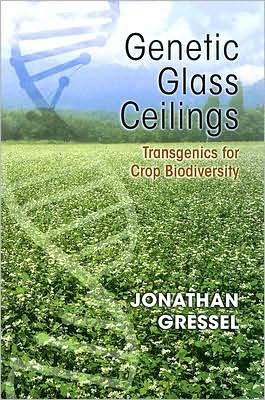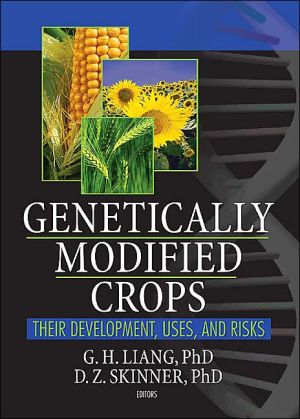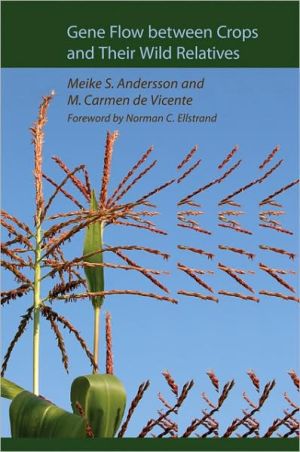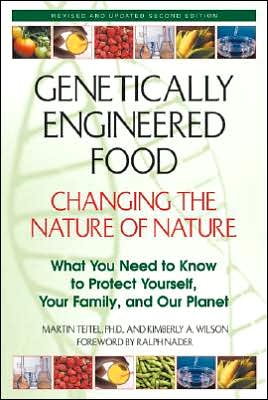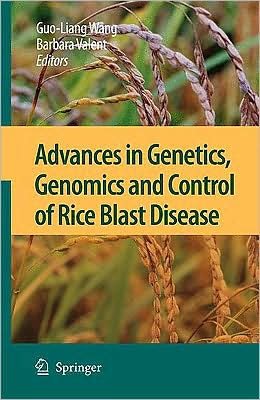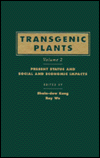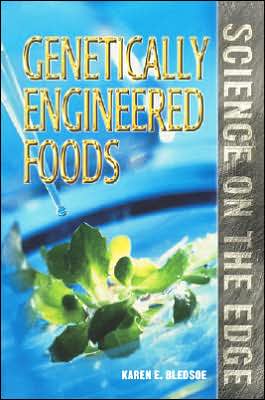Genetic Glass Ceilings: Transgenics for Crop Biodiversity
As the world’s population rises to an expected ten billion in the next few generations, the challenges of feeding humanity and maintaining an ecological balance will dramatically increase. Today we rely on just four crops for 80 percent of all consumed calories: wheat, rice, corn, and soybeans. Indeed, reliance on these four crops may also mean we are one global plant disease outbreak away from major famine.\ In this revolutionary and controversial book, Jonathan Gressel argues that...
Search in google:
As the world's population rises to an expected ten billion in the next few generations, the challenges of feeding humanity and maintaining an ecological balance will dramatically increase. Today we rely on just four crops for 80 percent of all consumed calories: wheat, rice, corn, and soybeans. Indeed, reliance on these four crops may also mean we are one global plant disease outbreak away from major famine. In this revolutionary and controversial book, Jonathan Gressel argues that alternative plant crops lack the genetic diversity necessary for wider domestication and that even the Big Four have reached a "genetic glass ceiling": no matter how much they are bred, there is simply not enough genetic diversity available to significantly improve their agricultural value. Gressel points the way through the glass ceiling by advocating transgenics — a technique where genes from one species are transferred to another. He maintains that with simple safeguards the technique is a safe solution to the genetic glass ceiling conundrum. Analyzing alternative crops — including palm oil, papaya, buckwheat, tef, and sorghum — Gressel demonstrates how gene manipulation could enhance their potential for widespread domestication and reduce our dependency on the Big Four. He also describes a number of ecological benefits that could be derived with the aid of transgenics. A compelling synthesis of ideas from agronomy, medicine, breeding, physiology, population genetics, molecular biology, and biotechnology, Genetic Glass Ceilings presents transgenics as an inevitable and desperately necessary approach to securing and diversifying the world's food supply.
Foreword: The Needs for Plant Biodiversity: The General Case Klaus Ammann ixPreface xviiWhy Crop Biodversity? 1Domestication: Reaching a Glass Ceiling 8Transgenic Tools for Regaining Biodiversity: Breaching the Ceiling 42Biosafety Considerations with Further Domesticated Crops 73Introduction to Case Studies: Where the Ceiling Needs to be Breached 138Evil Weevils or Us: Who Gets to Eat the Grain? 150Kwashiorkor, Diseases, and Cancer: Needed: Food without Mycotoxins 161Emergency Engineering of Standing Forage Crops to Contain Pandemics-Transient Redomestication 173Meat and Fuel from Straw 178Papaya: Saved by Transgenics 198Palm Olive Oils: Healthier Palm Oil 202Rice: A Major Crop Undergoing Continual Transgenic Further Domestication 219Tef: The Crop for Dry Extremes 241Buckwheat: The Crop for Poor Cold Extremes 257Should Sorghum Be a Crop for the Birds and the Witches? 272Oilseed Rape: Unfinished Domestication 300Reinventing Safflower 316Swollen Necks from Fonio Millet and Pearl Millet 325Grass Pea: Take This Poison 332Limits to Domestication: Dioscorea deltoidea 351Tomato: Bring Back Flavr Savr: Conceptually 357Orchids: Sustaining Beauty 366Olives: and Other Allergenic, Messy Landscaping Species 374Epilogue 382References 387Index 447
\ AgBioChatterI urge you to read Jonny Gressel's book, Genetic Glass Ceilings. I have read the first nine chapters, to the point where he begins his discussion of specific case studies (papaya, tef buckwheat, and others). I have learned so much from Jonny's book. Jonny asks challenging questions and then discusses realistic, clear-eyed solutions to the questions — all about the genetic glass ceilings faced by plant breeders.\ \ \ \ \ ChoiceOffers refreshing hope of successfully feeding the world's population... Recommended. Upper-division undergraduates through professionals.\ \ \ Journal of Commercial BiotechnologyEveryone who wants to learn and understand more about plant breeding and agricultural biotechnology should read Jonathan Gressel’s book. Its wealth of erudition and wisdom makes it worthy of recognition as a modern classic.\ — Drew L. Kershen\ \ \ \ \ \ CAB Abstracts DatabaseA compelling synthesis of ideas.\ \ \ \ \ Plant Science BulletinThis book would serve as a good basis for a serious course in agronomy departments around the world.\ — Lawrence Davis\ \ \ \ \ \ Journal of Agricultural ScienceThe book is indeed an eye-opener... Well worth the effort.\ — V. Moses\ \ \ \ \ \ Food SecurityProfessor Jonathan Gressel has written a thought-provoking book that contains something for everyone with an interest in the application of modern genetics to crop-based agriculture. I hope it will be read by both enthusiasts and skeptics about the application of genetic engineering to crop genetic improvement.\ — Ian Crute\ \ \ \ \ \ Quarterly Review of BiologyThis book provides an erudite documentation of the limited biodiversity in agricultural systems and the concomitant poor quality of the human diet.\ — Elena R. Alvarez-Buylla\ \ \ \ \ \ Economic BotanyA valuable reference for all interested in the role of TGVs [transgenetic crops] in the future of food and agriculture.\ — David A. Cleveland\ \ \
